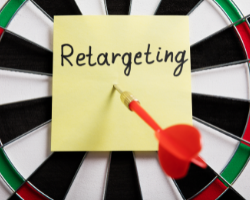- Sep 02, 2021
 0
0- by Paris Backston
Guide Part 2
The holidays are right around the corner so it’s a great time for eCommerce companies to capitalize on the opportunities that come with an increase in traffic. With proper preparation, online stores can gain brand recognition and increased conversions as they sail into the new year. Read more to learn about our top marketing tips for the upcoming holiday season.
1. Plan Out Your Target Audience and Social Media Advertising Strategy

To ensure your promotions are a success it’s important to start out with a target audience in mind. That way it’s easier to decide how you want to strategically choose the products you are featuring. When determining your product choice and targeting within the campaign, each social network has different options to choose from. Here’s a list of the different types of audience segments on some of the most popular social platforms:
- Facebook/Instagram:
- Location: You can choose by city, community, and country.
- Behavior: Base your ads on behavioral attributes like prior purchases or device usage.
- Demographics: Choose from different demographics like gender, age, education levels, job titles, and more.
- Interests: You can segment your audience by hobbies or traits like the type of movies they like to watch or their dietary preferences.
- Connections: This allows you to decide if your audience is currently already connected to your business or unfamiliar with your products. This can be important if you’re trying to target an audience that is currently already interested in your business for an easier conversion rate.
- You can also use lookalike audiences which are created from source audiences of people that already interact with your ads! This connects you to people that are very similar to people that already follow your page.
- LinkedIn:
- Job Experience: This includes job titles, seniority, job functions, member skills, and years of experience.
- Education: You can target based on degrees, subjects studied, schools attended.
- Demographics: Unlike Facebook and Instagram this is only split by age and gender.
- Company: You have access to target audiences based on industry, company names, company followers on LinkedIn, the growth rate and company size, and company category.
- Interests and Traits: Segment your audience by your potential customer’s interests, the groups they are a part of, and their traits
- Twitter:
- Demographics: You can filter by location, language, device (like phone type), platform (like phone carrier), Wifi (like internet provider), age, and gender.
- Targeting Types:
- Conversation: This is based on the content of people’s tweets and conversations.
- Event: Target people who attended various online and offline events.
- Tweet Engager: Market to people that have organically engaged with your previous tweets.
- Keyword: This allows you to search based on words your target audience used in previous tweets.
- Movie and TV: If people mentioned any tv or movies this is how you would interact with them.
- Interests: Twitter offers over 350+ present interests to choose from.
- Look-Alikes: Like Facebook, Twitter lets you target people who behave similarly to accounts that already follow you.
- YouTube:
- Audience targeting: Find people based on their interests, who they are, their daily habits, what they’re looking up, and their interactions with your business. This is split up based on google analytics.
- Affinity: Reach people based on their lifestyles, passions, and habits.
- Life Events: This narrows your audiences based on milestones like graduations or getting married.
- In-Market This allows you to target people who are looking up products and businesses similar to yours.
- Custom: Craft this audience based on keyword research, URLs, and apps.
- Remarketing: This helps you reach people that have already had some sort of historical engagement with your videos.
- Detailed Demographics: This is more like the other platforms and helps you create target audiences based on shared traits like their hobbies, occupations, or ages.
- Similar Audiences: This is like the lookalike audiences from above and allows you to find people that are similar to consumers that already follow you.
2. Pricing and Promotional Techniques
Now that you’ve picked your audience and who you will target with your ads you can cater your pricing to meet their needs. Before you begin to decide on your promotional pricing strategy here are some basic pricing techniques:

- Price Skimming: To price skim, start your prices high and then lower them as you become more competitive in the market.
- Marketing Penetration Pricing: When your company is first starting out, set your prices low so you are more competitive than your competition.
- Premium Pricing: If you have a more wealthy target audience and are selling high-quality products you can start your prices high to signal quality and luxury appeal.
- Economy Pricing: This is when you set lower prices and target customers who are looking to make larger savings overall.
While these are good long-term pricing strategies, you may want to implement short-term pricing and promotions for the holiday months. Here are some examples of different promotional strategies to use to encourage quick conversions.
- Refer-a-Friend: Tap into your clientele’s social networks and use social proof to your advantage! Give your customers some type of reward if they refer their friend to your products.
- Buy One Get One Free: This is a great way to entice your customers to try out multiple items from your store.
- Free Shipping: It’s always difficult to get to the checkout and see that shipping costs are going to add $10 or more to your purchase. By swallowing this cost you may raise your overall conversion rate.
- Free Item with Purchase of $X or More: Some customers may be buying holidays gifts in bulk. This is a great way to encourage customers to buy more of your products.
- Loss Leader: A loss leader is when you discount a product or service lower than its production cost. Some companies use this strategy to try and attract new customers or to sell more expensive products. It can also be a smart tactic if you’re trying to penetrate a new target market.
3. Publicize Your Sales with PPC and Google Ads
Now that you have a well-thought-out marketing strategy in place it’s important to promote and publicize it! PPC and Google Ads are a great way to increase the traffic to your site. Get that keyword strategy together and start bidding on the words that are most relevant to your business. It’s amazing what a good PPC strategy can do to garner traffic and conversions. Here are some things to keep in mind:
- Make sure the landing page you’re linking to is relevant and optimized for conversions.
- Optimize your negative keywords so your ads aren’t showing up on searches that don’t align with your strategy.
- Research and understand the basics of keyword matches:
- Broad: match searches with any words or synonyms of your target words
- Broad Match Modified: match only with searches that include all of your keywords within the query
- Phrase Match: match only when searches use the exact phrase you are targeting plus searches that include the meaning of your keyword
- Exact Match: match search that have an exact keyword match and order (searches must contain all keywords in the exact order you list them plus close spelling errors)
- Adjust your bids for geotargeting. If your products are weather dependent or popular in certain areas you can adjust geotargeting spending so your ads show up to people in the most appropriate locations.
- Run mobile-centric campaigns. We recommend checking your campaign conversions by device so you can see which ones to shift to target certain users’ search preferences.
4. Be Strategic About Your Email Marketing Tactics

It’s important to tap into your established leads list with a well-thought-out email drip campaign. You want to make sure you’re touching your pool of potential holiday shoppers more than once to remind them about your upcoming sale and create some urgency. This is a great opportunity to use some advanced email tactics like last-chance opportunities and special offers catered to certain mailing lists. Here are a few rules of thumb to follow:
- Split your email lists into segments and groups so you can specialize the copy, graphics, and promotions displayed.
- Use perfect timing setting options when sending your emails so it lands in your customers’ inbox at the time they are most likely to open it.
- Use A/B testing on your sales emails to see which strategies worked the best so you can utilize them for your next sale.
- Optimize your emails for mobile. Around 47% of emails are opened on people’s phones according to email marketing firm Litmus. Here are some quick optimizations you can use:
- Use one-column templates.
- Increase your font size.
- Make your call to action easy to identify, in the middle of the page, and easy to tap.
- Measure your performance as you go by looking at open rates, click rates, and eCommerce data through UTM tracking and your email marketing providers’ tools.
- Implement a last chance email list. Look at your email results a few days before the end of the sale and send a last chance email offer to some of the mailing lists with the highest open rates.
Some email marketing plans have begun to change since Covid-19. Read our blog to see how it may impact your strategies this year!
5. Create Holiday Content Converts By Adding Retargeting Pixels to Your Ads

Did you know that 96% percent of customers will leave a website without actually purchasing anything? Utilizing retargeting pixels in your ads is a great way to bring customers back to your website! But what is a retargeting pixel and how does it work? By attaching a small piece of code to your site you can track potential customers that leave your eCommerce stores and display more advertisements on Facebook and Google to remind them of your sale! This is a very effective marketing strategy because it helps you turn some of your bounced traffic into conversions down the line. Check out our blog that describes how to implement retargeting pixels into your marketing campaign!
Now Go Get That Cash!
Marketing is important to drive traffic and increase conversions during the holiday season. If you’re looking for more information on how to get ready, keep checking A2’s blog for more guides and expert advice on making sure your eCommerce site is prepared! We’ll be running a guest blogging series where experts from our team inform you on all types of topics: from the best way to make sure your site is secure to common types of fraud to look out for as the conversions roll in. If you’re looking for hosting with speed, support, and security to make sure your eCommerce site is up and ready to handle all that holiday traffic, make sure you check out our discounted turbo plans!
Learn More:
Interested in learning more? Get access to The Ultimate Guide to Getting Your eCommerce Website Holiday Ready.










